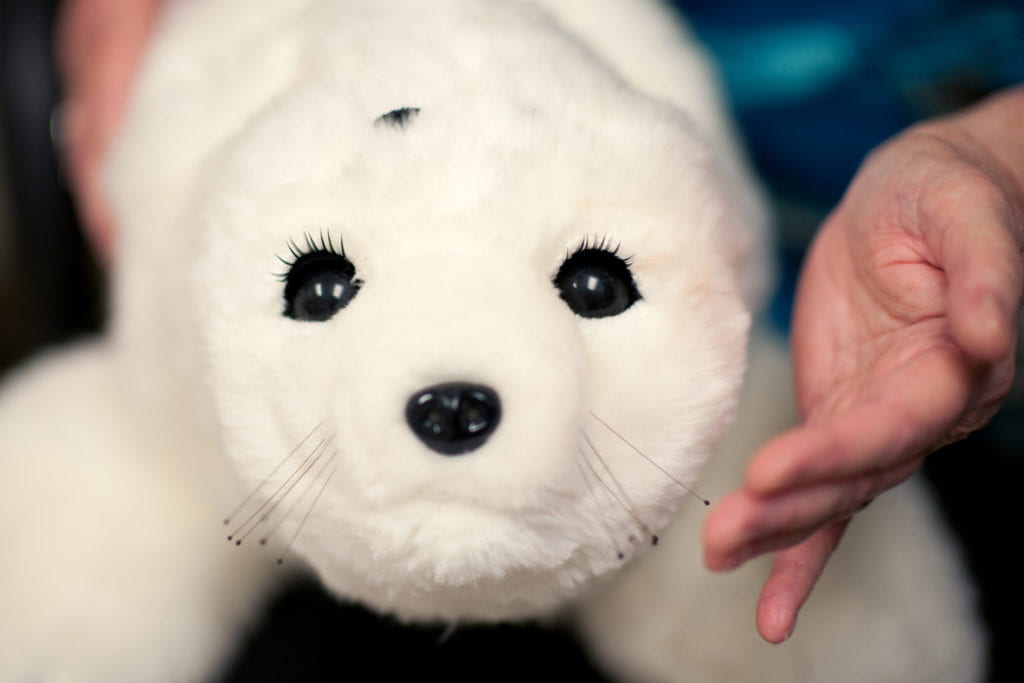Pet therapy without the pet
Oncologists at UC Irvine Medical Center study whether an interactive therapy robot can benefit women receiving chemotherapy.
As therapy animals go, the new players at UC Irvine Medical Center are decidedly low maintenance. They don’t eat much, obey commands without question and are hypoallergenic to boot.
Oncologists there are pairing robotic baby harp seals with women receiving chemotherapy to study whether the cuddly mechanical creatures can ease their pain and stress.
“Quality of life is a very important predictor of survival in ovarian cancer,” says Dr. Krishnansu Tewari, a gynecologic oncologist at UC Irvine and the study’s primary investigator. “The theory is that patients who have a good quality of life have a stronger immune system, and a stronger immune system lets you fight the cancer better.”
Researchers plan to enroll 100 women during the yearlong study. Some will read, rest, play video games or watch TV during chemotherapy treatments, while others will be selected to interact with one of four robots the manufacturer donated for the study. Research coordinator Anita Wallick will survey both groups’ anxiety, mood and pain levels for comparison.
According to gynecologic oncology fellow Dr. Ramez Eskander, the goal is to find new ways to improve what the National Cancer Institute calls complementary therapies – those that enhance or support conventional clinical treatment.
Kirsten Osgood is sold. The first patient enrolled in the trial, she recently underwent a grueling 7½-hour chemotherapy session that included a blood transfusion. “Paro” kept her company and, she says, reduced her anxiety.
“It’s very cute,” says Osgood, 70, who was diagnosed with Stage 3c ovarian cancer in September 2009. Since then, she has endured two lengthy operations to remove the tumor and nearby organs and lymph nodes and more than two dozen rounds of chemotherapy.
“It was really very comforting,” Osgood says of the robot. “The chemo can sometimes be stressful, but the seal made the time fly.” She says Paro’s flippers flapped with excitement in response to her voice. At other times, the creature put its head down and made purring sounds.
Kirsten’s husband Roger accompanies her to every chemo treatment and says such sessions usually leave her exhausted.
“I could see the difference with the robot, she seems less stressed and tired,” he says. “We’ve been married 48 years and she’s still the bravest girl I’ve ever known.”
The idea that animals can assist in emotional and physical healing has been around for decades. A well-known 1980 study suggested that people with coronary heart disease who owned pets lived longer than those without pets. A 1988 study found that a subject’s blood pressure was lowest when petting a dog. Another concluded that patients of a pain management clinic who were exposed to therapy dogsexperienced less pain and showed improvements in mood and feelings of well-being.
Not everyone can tolerate a real, live animal – some people are allergic, Eskander notes.
“In a chemotherapy infusion center, we’re already dealing with individuals whose immune system is compromised,” he says, adding that patients may also be wary of having an animal so close to the maze of tubes conveying the chemo drugs.

